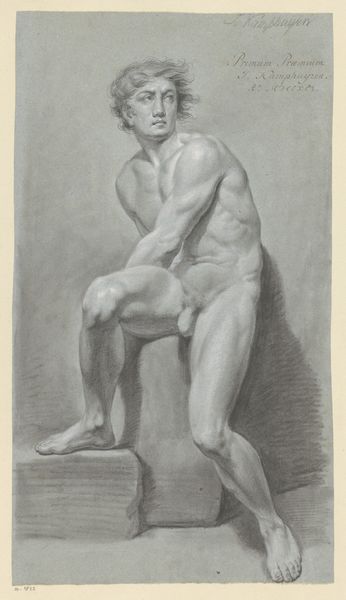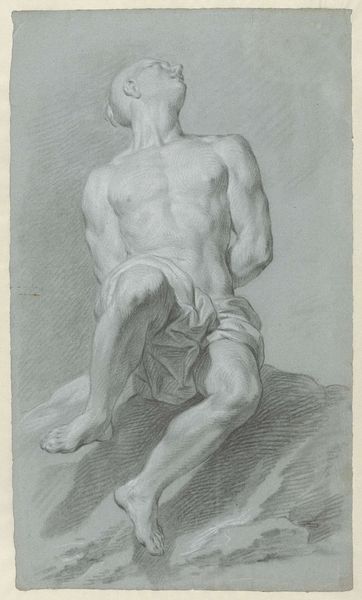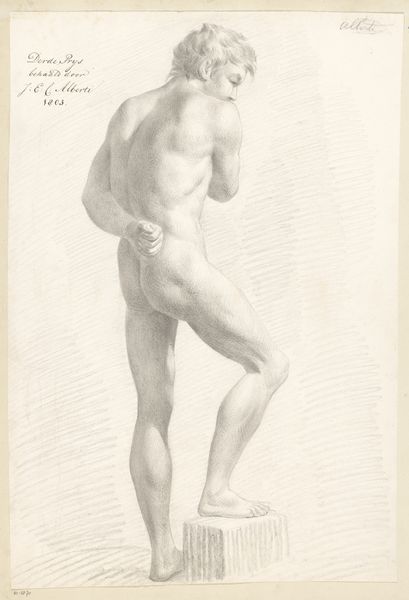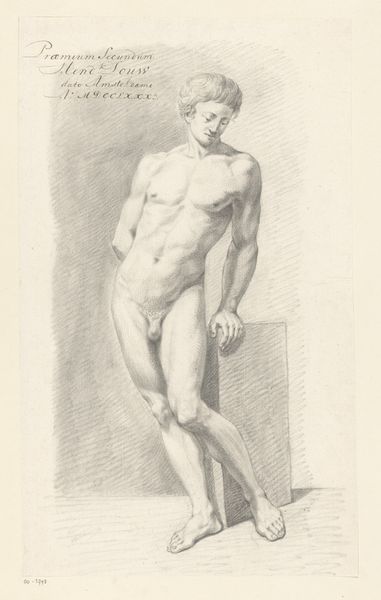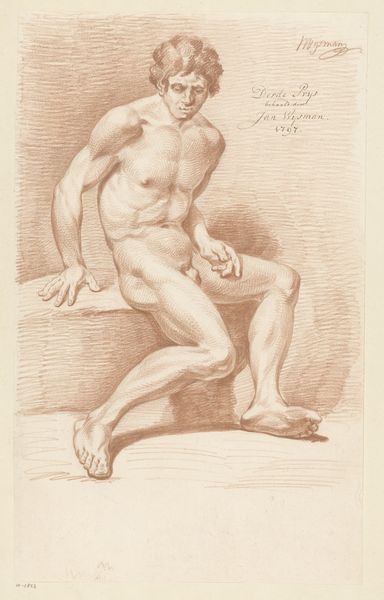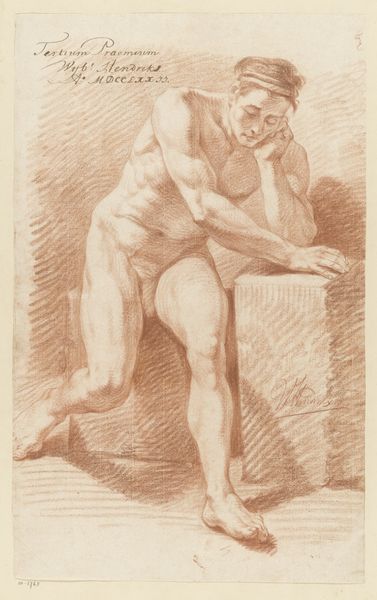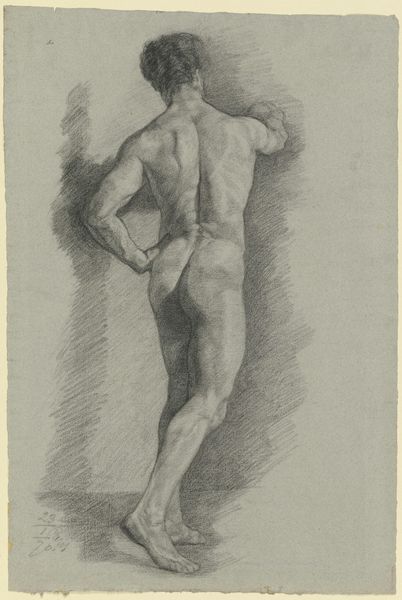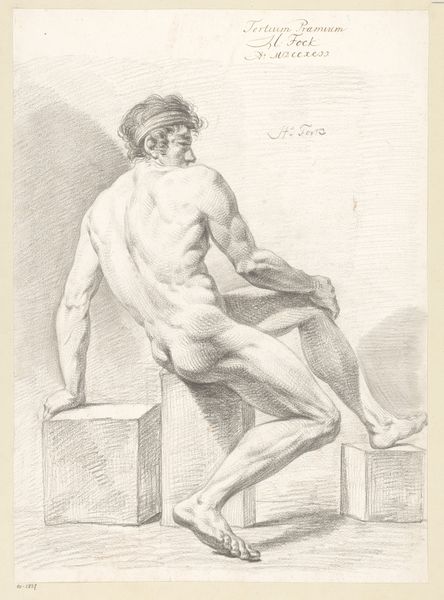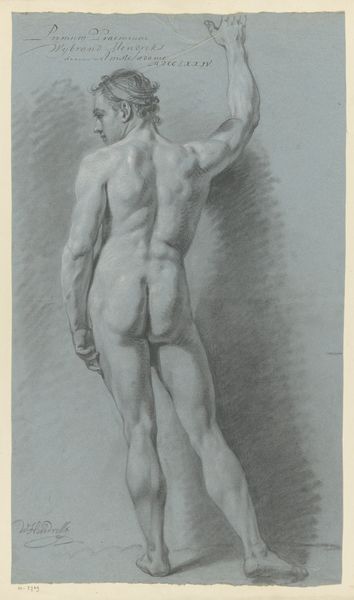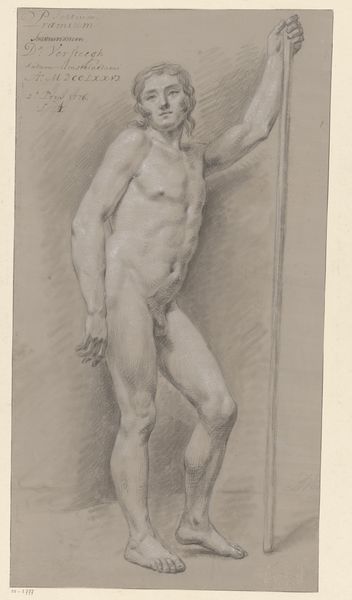
drawing, pencil, graphite
#
portrait
#
pencil drawn
#
drawing
#
pencil sketch
#
charcoal drawing
#
figuration
#
pencil drawing
#
pencil
#
graphite
#
portrait drawing
#
pencil work
#
history-painting
#
academic-art
#
nude
#
realism
Dimensions: height 546 mm, width 320 mm
Copyright: Rijks Museum: Open Domain
Editor: This graphite drawing, "Zittend mannelijk naakt, van voren gezien" by Jan Kamphuijsen, possibly from 1788, depicts a seated male nude. I’m immediately struck by the almost clinical detail, yet it feels... lifeless. What can you tell me about this piece? Curator: Look closely at the materiality: the graphite itself, the paper, the subtle variations in pressure that build form. This wasn't just about representing the ideal male body. Consider the drawing's purpose—as a prize-winning academic study. It speaks to a system of artistic production rooted in specific materials, labor, and evaluation. How does understanding that context shift your perspective on the work? Editor: I see what you mean. Knowing it was a competition piece changes things. It makes me think about the hours spent mastering the technique, the price of the materials, the judging criteria…the whole system surrounding art creation. Curator: Exactly! Academic art in the late 18th century was a commodity; these skills were crucial for aspiring artists. This wasn't solely about individual genius but the meticulous acquisition of skills and resources within a highly structured system. Editor: So, it’s less about emotional expression and more about demonstrating proficiency in a particular craft, embedded within a social structure. The “lifelessness” I felt initially might reflect the very nature of this artistic production? Curator: Precisely! By examining the materials, techniques, and the socioeconomic context of this drawing, we move beyond aesthetics to understand art as a product of its time, reflecting specific production practices and social values. Editor: That’s fascinating. I went in thinking about the nude as a subject, but I’m leaving thinking about the economics and labour involved in creating it. Thanks for pointing me in that direction.
Comments
No comments
Be the first to comment and join the conversation on the ultimate creative platform.
